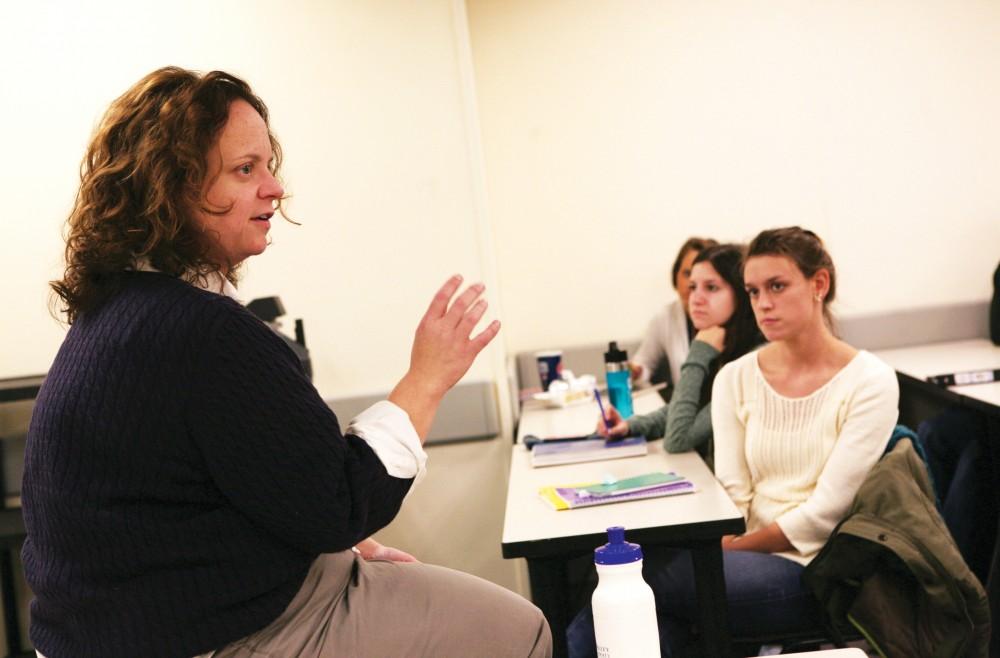Professor evaluation updates in progress

GVL / Archive Professor Danielle Leek speaking to her capstone class.
Jan 26, 2015
Student evaluations of teachers are an important tool both inside and outside of the classroom. Professors nationwide use them to hear students’ voices to improve their classes, as well as evaluate themselves and their peers in annual reviews. Grand Valley State University faculty recently voted on a proposal that would make the teacher evaluation process streamlined with a universal system.
Currently, “every unit has their own form or process,” said Christine Rener, the director of the Pew Faculty Teaching and Learning Center. Rener said teacher evaluations are either paper-based or online, depending on the course. For the future program, all evaluations will be online.
Rener said the advantage of paper evaluations is that participation is high because they are given right in class. However, quality feedback is the aim of evaluations, and an online format can be more approachable.
“It’s simpler to administer and feedback is given very quickly,” Rener said.
Streamlining the evaluation system is supposed to make them easier for teachers and students to understand.
“We saw that it is hard to promote participation when there are different forms and processes for each class,” Rener said. “The new system will have four universal questions on each evaluation that will be paired with other questions from one of twelve different forms to create a system that is highly researched to give good feedback. Part of the planning of the new system involves figuring out which of the 12 question forms will best go with particular classes.”
Rener said part of the solution is to encourage class time for online evaluations, either on school computers or mobile devices.
In addition, a marketing campaign including short videos and an informational website is being developed to encourage participation.
“There are a few students serving on the implication committee working on communication with students to help them understand what the form is for and how to give constructive feedback,” Rener said.
Ellen Schendel, a GVSU professor in the Brooks College of Interdisciplinary Studies, said she spends a significant amount of time looking at how to structure her classes to give students the best understanding of the material and assignments, and student comments help her understand their needs.
“I find the written comments students make are useful about specifics of assignments or projects I give,” Schendel said.
Schendel believes students are more likely to express themselves more thoughtfully with online evaluations, but she still thinks it has downsides.
“Most of my evaluations are online,” she said. “Because it’s typing, I think students write more. What I worry about online evaluations is if you ask students to fill them out outside of class, they won’t.”
GVSU sophomore Natalie Joaquin said the effort she puts into filling out evaluations depends on whether it is offline or on.
“I rush through if it’s in class just to get out,” she said. “I do fill out the written parts but usually in one to two sentences. Habits such as that are why an all-online system could be an improvement, as many professors see written comments as the most valuable part of the evaluations.”
The new evaluation system is still in the planning stage. It is not yet clear when the system will launch, but the earliest is next fall.





















